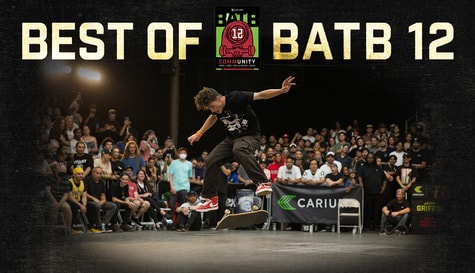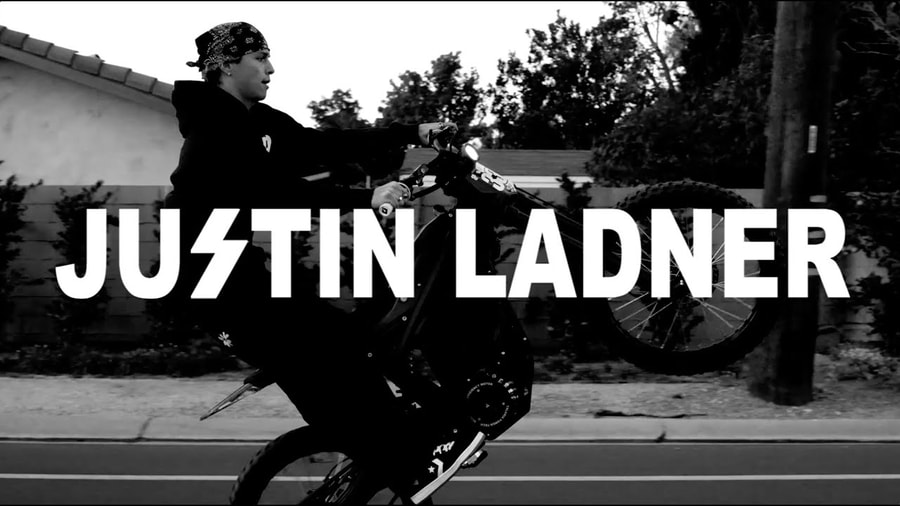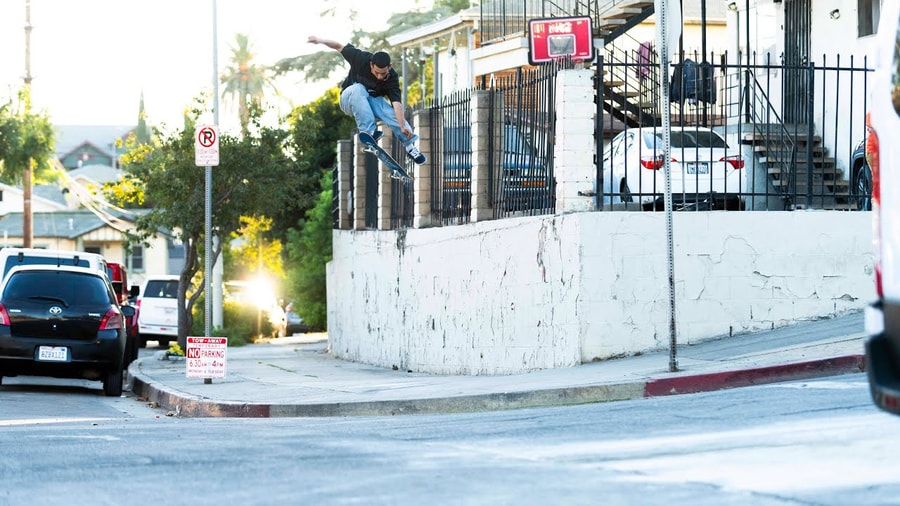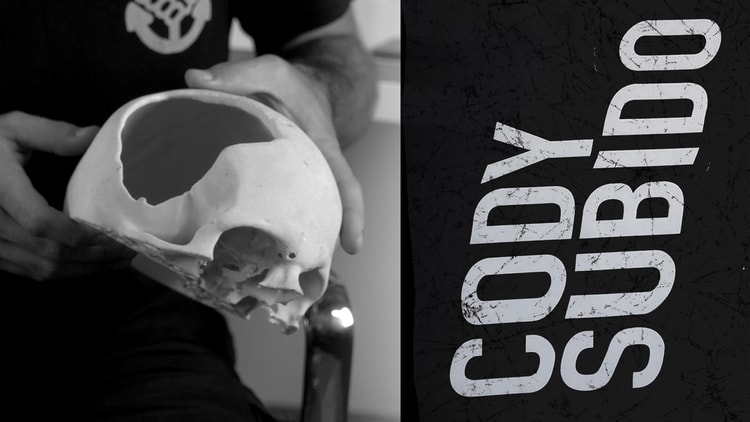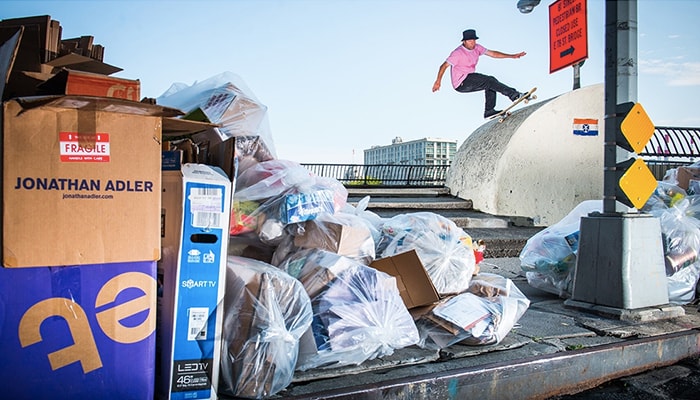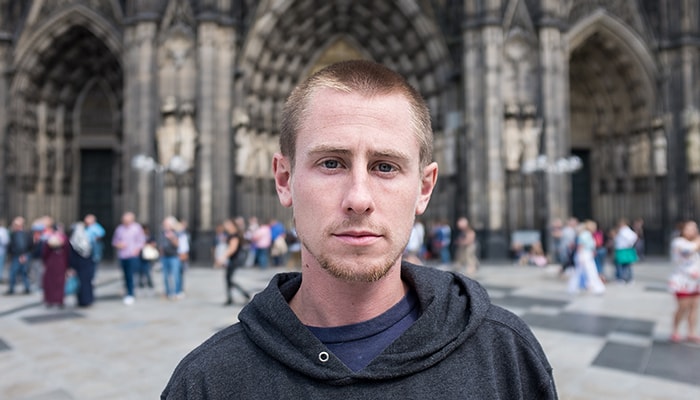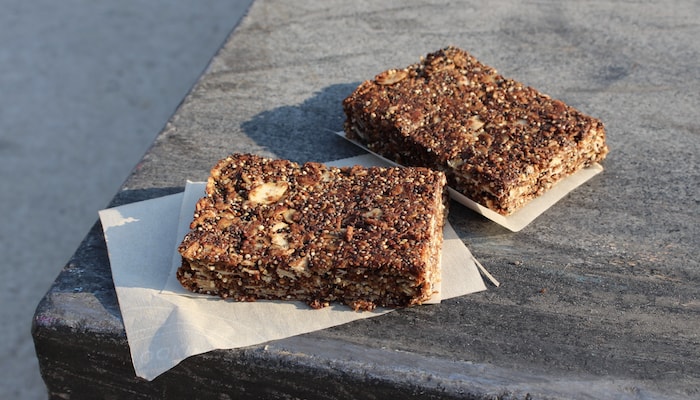THE DAILY PUSH — Road to Recovery

WORDS: Matt Beare
So, the session has come to an end: your legs are aching, your shins are cut, your gooch is throbbing from credit carding yourself, and you didn’t get your trick. You tell your mates you could have got it if it wasn’t for the crack in front of the ledge; there’s always an excuse and it’s never your fault. You plan on coming back to get it tomorrow but your body is destroyed…
But wait! There’s a new Daily Push article focusing on how to recover from a heavy session!
This week we’ll be covering the best ways to recover from a session and how making an effort to properly recover can not only return you to feeling good on your board faster but also make you stronger, more resilient, and even improve your skating. In the sports world it’s said that recovery isn’t complete or effective unless you reach a higher state of fitness after doing it. A huge number of skateboarders constantly complain about body pain and how they’re not feeling it 30 minutes into the session, leaving us with no choice but to put the common recovery choice of a beer and cigarette to the test. There isn’t one technique that will immediately solve all of your problems but what we’re about to go through will put you on the right track and should make a big difference on how you feel.
The first things you should do when you finish your sessions are—if you’re thirsty—drink (check out the benefits of staying hydrated in last week’s article here), then stretch and re-energize. When you skate you do a lot of the same intense movements over and over again which can leave you feeling as stiff as a 12-year-old banjo string. Actually, I don’t know if that’s a good example—for all I know, old banjo strings are quite flexible. What I was trying to get across was that you’ll be left with less flexibility than when you started and this is where stretching comes in. Although stretching doesn’t help with pain, some of that post-skate discomfort can be a result of stiffness and decreased range of motion. Stretching is a good way to combat these issues and instantly improve how you feel. When stretching after a skate, you don’t want to do it aggressively to the point that your whole body is vibrating, you want to take it easy and see it as more of a relaxation kind of thing (a full list of post-skateboarding stretches and how to do them can be found here). If you want to push yourself a bit to increase your flexibility this can be done at another time.

The next stop on the path to freshness is replenishing your energy stores with carbohydrates and repairing any muscle damage that can occur after a heavy session with protein. If you read last week’s article you’ll know that the food you eat is what powers your sessions, and after a big one it’s probable that your energy levels will be low. The easiest and fastest way to restock the stores and at the same time rebuild your muscles is with some kind of recovery shake of protein and carbs; one of the easiest ways to get this inside of you is with a bit of protein powder in something like a banana shake (with water is enough). If this option makes you feel like a jock then drop a piece of chicken in with your shake instead and you’ll be good to go. Other options are things like a bagel/sandwich with something like peanut butter/tofu/eggs/tuna inside. Even chocolate milk/soy milk are good and easy options. If you skate regularly you should try and slip in a post-skate snack like the ones above within 2 hours of finishing your session—the sooner the better. If you don’t plan on skating for a couple of days, the 2-hour window isn’t so important, just making sure you eat a good meal at some point in the day will be enough.
Another big part of skateboarding is shinners, boards to the ankle, bruises, and all of the other wonderful impact injuries. Icing these tender spots will do you massive favors in terms of bringing down the inflammation, speeding up the healing process, and improving how you feel the following day. Make sure you ice yourself for no longer than 20 minutes at a time, with at least a 1-hour break in between, and with something between you and the ice; something like a towel or—if you’re icing classy—some Mongolian silk. You shouldn’t ice open wounds as the inflammation here is needed to cure up and protect the wound. If you have really destroyed yourself, you can take icing to the next level and recover like a UFC fighter by preparing yourself an ice bath. At times, skateboarding can definitely be close to the level of UFC in terms of self-destruction and I’m sure David Gonzalez could have done with one after filming the first rail banger in his ‘Possessed to Skate’ part. Put some rose petals in there and try not to cry.

Sleep is another massively important factor in recovery, maybe even the most important. It’s while you sleep that your body’s self-repair mechanisms are most active. It’s while you’re dreaming about young piglets battling lizards in intergalactic warfare that your brain is ingraining memories and solidifying skills; if you’ve figured out a new trick, sleep can help you lock it in. Although we all know this isn’t always the way skateboarding works and, to be honest, you’ll probably have already lost it by tomorrow. On the other hand, not getting enough sleep can destroy the next day’s skate and your life in general. It can affect how you skate by lowering the response time and coordination of your muscles and lowering your overall concentration and reaction time.
If your body is still aching the following day then there’s not much you can do to resolve it. If you’re hurting from bumps and bruises, then continue to ice yourself. But, for muscle ache, time is the most effective healer. Going for a super chilled skate followed by some stretching might help with the recovery process, but don’t push it. If your muscles are aching the next day, then their strength, response time and power will have decreased along with your body’s ability to absorb impact—something that’s pretty important for skateboarding. Going for it when your body isn’t functioning and responding like normal can result in injury, in the moment and long term, as pushing it will make your body compensate by putting pressure where it shouldn’t. As hard as it can be to turn down a session, sometimes your body just needs a break, and anyway giving your body enough time to rest will help you come back even stronger.
Looking at the bigger picture of recovery, one of the best things you can do is eat a healthy balanced diet on a regular basis. Miles Silvas’s Villager introduction video just dropped and in it he says, “I try to eat good so I can skate good. Since I changed my diet I feel lighter and have more energy.” Eating well and drinking enough water, always, will improve how fast and well you recover and give you more energy in general. Another thing is to be aware of what works best for you. If you do something that’s not listed here and it works, then keep doing it.
Another good recovery option is foam rolling. Next week, we’ll be getting deep into what foam rolling is and why so many pros are doing it these days. Until then, check out www.thedailypush.com for extra info on everything related to feeling good on your board and improving how you skate.



